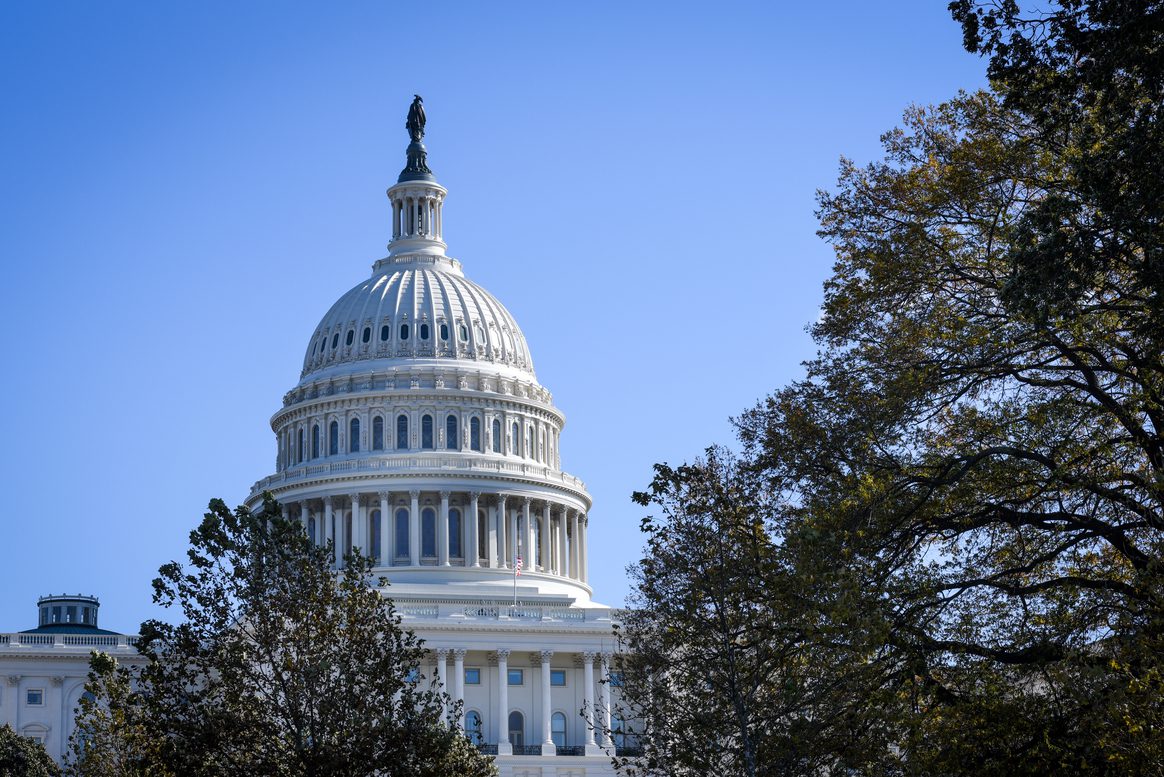
 Editor’s note: In this moment of extraordinary crisis, backstopping mid-sized American companies—and the workers they employ—must be an essential element in any attempt by the federal government to shore up the economy and prevent lasting damage.
Editor’s note: In this moment of extraordinary crisis, backstopping mid-sized American companies—and the workers they employ—must be an essential element in any attempt by the federal government to shore up the economy and prevent lasting damage.
In the following note to clients, Rich Handler, CEO, Jefferies Financial Group and Brian Friedman, President, Jefferies Financial Group outline a compelling approach to the situation. With their permission, we’re republishing it here. We ask that you share it with others—and also reach out to Washington on behalf of mid-sized private firms which form the backbone of the U.S. economy.
To Our Clients and Colleagues:
We want to continue to share our thoughts with you about the evolving economic environment and the financial markets.
Jefferies’ Investment Banking clients are primarily mid-sized public and private companies in all industries, generally worth $500 million to $10 billion. They employ many tens of millions of people and represent a true cross-section of the economy. We are on the front line and may see things through a different lens than do others.
First, let us state the obvious — the gravest issue facing us today is to stop the spread of the Coronavirus and protect the health of all citizens.
The second vital issue and fundamental to our economy and way of life is that too many businesses do not have customers right now because the customers, whether consumer or commercial, are rightfully staying home, are afraid to touch anything, are concerned about their livelihoods or liquidity, or otherwise withdrawing from commerce and society. We are not so slowly grinding to what could become a dead stop.
As a result, real businesses, small and large, will have absolutely no choice, but to severely (perhaps more than ever in history) reduce their payroll costs, one way or another — pay cuts, terminations and furloughs. A very small handful of companies in the world can survive significant (and, in some cases, complete) reductions in revenue. The math just doesn’t work for the vast majority of businesses and the time span for survival is shorter than most people realize. If what we fear is happening in fact gains more momentum (and we are pretty far along this road), not only will unemployment skyrocket, but we will see huge numbers of businesses shut down, liquidated or file for bankruptcy. In our view, this MUST and CAN be avoided.
In 2008, we all agreed that the epicenter of the financial crisis was the large financial institutions and that by assuring their survival and ultimate health, we would assure that the wheels of commerce broadly would continue to turn. Now, the epicenter of this economic crisis is almost the entire business community where we are freezing up the same way the banks were seizing up.
Healthy businesses, through absolutely no fault of their own, but rather because of the evaporation of demand caused by viral disease, have no visibility and no confidence to invest good dollars to keep their employees on board and to wait patiently for the all clear siren. What our economy needs is funding to buy time to breathe, keep paying employees, maintain capacity and capabilities, and simply get to the other side.
It may be helpful to give each person some cash directly in their pocket. However, it is much more permanently impactful to make sure each individual will have a job and livelihood once the crisis passes. This must be a top priority for the future of our world and our way of life. This is the confidence that the markets and society need to get through the economic portion of this crisis.
We don’t have all the answers and understand what we are about to describe isn’t easily actionable, but it is a straightforward method of keeping businesses alive and people employed, with the cost ultimately borne by the private sector, but financed for a time by government.
Government could set up a program that would refinance first lien and, if necessary, some second lien loans and bonds, plus provide incremental credit to support employment. The employment loan would be equal to up to 50% of the compensation deduction that the company took on its 2018 tax return. That way we know what the real payrolls for the companies were historically.
Eligibility for this loan and program would be conditioned on the company keeping all its employees and paying out compensation in the next six months at least equal to the amount of the incremental loan, thereby assuring a version of full employment for the next six months for all companies and their people. By using the companies to distribute the payroll to their employees, this can be accomplished quickly and efficiently.
The government has all the tax records and can make clear that using any funds used improperly would be a punishable crime. The money goes to the workers, and the company is merely the conduit which allows the money to get quickly distributed and ultimately the guarantor of its repayment.
Governments borrow at super low rates today, so the size of this job protection package, while potentially enormous ($Trillions+), should be relatively easy to implement and service. The loans that the government will be injecting into the companies will replace the most senior part of the capitalizations (safest) plus add the amount of the six month employee protection program, and carry a modest and acceptable interest rate, pay in kind for up to two years and have a maturity of 5-7 years, with no early prepayment penalty.
This would be reasonable for businesses and, by virtue of the interest rate and the maturity, would provide them the breathing room to get to the other side. This program probably would cost the government nothing because effectively you are lending money at the top of the balance sheet funded by super low cost government debt. The positive spread from loans to companies that will be healthy in a matter of months should more than cover any losses (similar to the TALF program in 2008). A similar program could be undertaken by the SBA for smaller companies and perhaps with an even lower interest rate and some other more favorable terms to really spur the smaller companies.
Mass bankruptcies and massive layoffs at otherwise innocent and healthy companies makes no sense. The government will have to pay unemployment to the people and, in three months, there won’t be companies to go back to so they will stay unemployed. These initial companies feeling the first wave of pain and their people are interconnected with the healthier companies that are further away from the first line of fire and, if no aid is forthcoming, the wave of carnage will sweep through the economy.
Mass bankruptcies beget more mass bankruptcies.
This is not a “bail out” of businesses. This is enabling healthy companies who did absolutely nothing wrong to continue to keep their businesses intact while the world is shut down. Their people will get paid and have the same jobs waiting for them when the virus has passed.
This is merely a template and we are sure there are many wrinkles, nuances and improvements that the government and others in the private sector can suggest to improve this simple plan. We are confident that this disease will run its course and the world will rally together with proper social distancing and improved hygiene. We also believe eventually therapeutics and hopefully a vaccine will come.
If we also deal with protecting our companies by helping to keep all employees safe and paid during this painful period, our economy will be ready, willing and able to return to its glory.
With hope, admiration for all around us and the beginning of a plan,
Rich and Brian




0

1:00 - 5:00 pm
Over 70% of Executives Surveyed Agree: Many Strategic Planning Efforts Lack Systematic Approach Tips for Enhancing Your Strategic Planning Process
Executives expressed frustration with their current strategic planning process. Issues include:
Steve Rutan and Denise Harrison have put together an afternoon workshop that will provide the tools you need to address these concerns. They have worked with hundreds of executives to develop a systematic approach that will enable your team to make better decisions during strategic planning. Steve and Denise will walk you through exercises for prioritizing your lists and steps that will reset and reinvigorate your process. This will be a hands-on workshop that will enable you to think about your business as you use the tools that are being presented. If you are ready for a Strategic Planning tune-up, select this workshop in your registration form. The additional fee of $695 will be added to your total.

2:00 - 5:00 pm
Female leaders face the same issues all leaders do, but they often face additional challenges too. In this peer session, we will facilitate a discussion of best practices and how to overcome common barriers to help women leaders be more effective within and outside their organizations.
Limited space available.

10:30 - 5:00 pm
General’s Retreat at Hermitage Golf Course
Sponsored by UBS
General’s Retreat, built in 1986 with architect Gary Roger Baird, has been voted the “Best Golf Course in Nashville” and is a “must play” when visiting the Nashville, Tennessee area. With the beautiful setting along the Cumberland River, golfers of all capabilities will thoroughly enjoy the golf, scenery and hospitality.
The golf outing fee includes transportation to and from the hotel, greens/cart fees, use of practice facilities, and boxed lunch. The bus will leave the hotel at 10:30 am for a noon shotgun start and return to the hotel after the cocktail reception following the completion of the round.